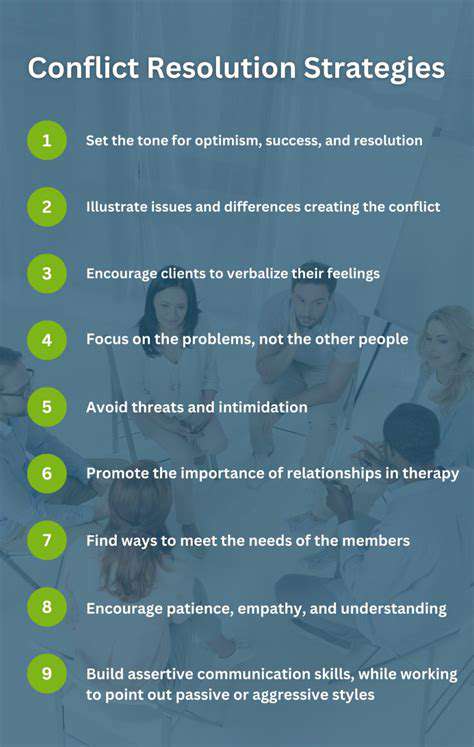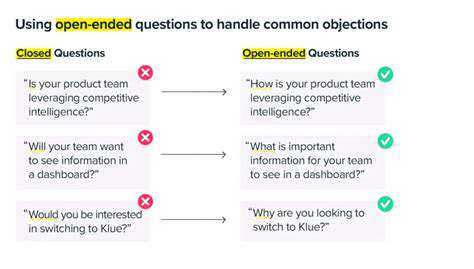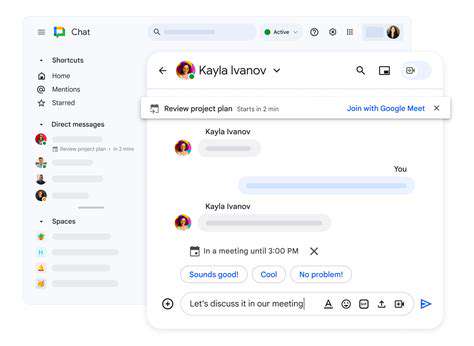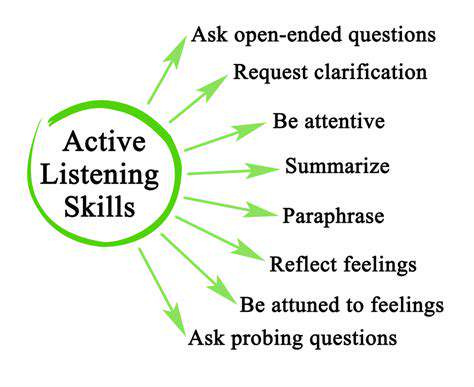Guide to Building Trust in a Team
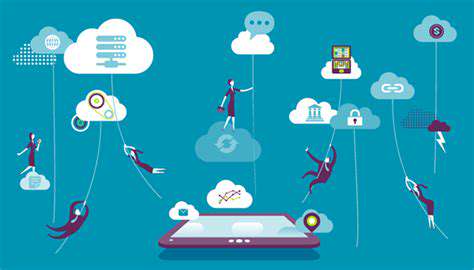
Establishing Trust and Rapport
Building trust and rapport forms the bedrock of meaningful communication. This process requires genuine engagement - listening attentively, validating others' viewpoints, and showing sincere understanding. When people feel psychologically safe, they're more likely to share authentic thoughts and concerns without fear of judgment. This environment doesn't happen by accident; it's carefully cultivated through consistent, respectful interactions.
Developing strong connections means moving beyond superficial exchanges. It involves demonstrating authentic curiosity about others' experiences and perspectives, rather than simply waiting for your turn to speak. These meaningful interactions create mutual understanding that serves as the foundation for all productive communication.
Clarifying Expectations
Effective communication demands crystal-clear understanding of what's expected from all parties. This means going beyond vague assumptions to spell out specific deliverables, timelines, and quality standards. Precision in expectation-setting eliminates guesswork and aligns everyone's efforts toward common objectives. Documenting these agreements provides valuable reference points that prevent future misunderstandings.
Mastering the Art of Listening
True listening extends far beyond hearing words - it involves interpreting tone, observing body language, and understanding context. Skilled communicators practice reflective listening by paraphrasing what they've heard and asking thoughtful follow-up questions. The most effective listeners notice what isn't being said as much as what is verbalized.
Constructive feedback represents another critical communication skill. When delivered with care and specificity, feedback becomes a powerful growth tool rather than criticism. The most impactful feedback focuses on observable behaviors and suggests practical improvements while acknowledging existing strengths.
Valuing Transparency
Organizations that prioritize transparency create cultures where information flows freely and honestly. When leaders share both successes and challenges openly, it builds credibility and encourages similar honesty throughout the team. This approach transforms potential problems into shared challenges that the team can address collectively.
Navigating Communication Challenges
Even with best intentions, communication breakdowns occur due to personality differences, cultural variations, or unconscious biases. Proactively identifying these potential obstacles allows teams to develop strategies for overcoming them before they escalate.
Addressing communication challenges requires flexibility and emotional intelligence. Sometimes it means adjusting your natural communication style to better connect with others. Other situations may call for creating new protocols to ensure everyone's voice gets heard equitably.
Establishing Clear Roles and Responsibilities
Defining Team Contributions
Precise role definition eliminates confusion and empowers team members. Beyond listing tasks, effective role descriptions explain how each position contributes to larger objectives. This clarity enables individuals to take full ownership of their work while understanding how their efforts fit into the broader mission. When people see the purpose behind their responsibilities, engagement and accountability naturally increase.
Cultivating Accountability
Accountability systems work best when they emphasize learning over punishment. Establishing regular check-ins and progress reviews creates natural opportunities for course correction. Teams that view mistakes as learning opportunities rather than failures develop resilience and continuous improvement mindsets. This approach transforms accountability from something feared into a valued growth mechanism.
Communicating Role Expectations
Role clarity begins with comprehensive onboarding but requires ongoing reinforcement. Regular team syncs, updated documentation, and open Q&A forums ensure alignment as projects evolve. Explaining the why behind assignments helps team members make better independent decisions when unexpected situations arise.
Strategic Task Assignment
Effective delegation considers both current competencies and growth opportunities. Matching tasks to existing strengths ensures quality results while occasionally stretching assignments develop new capabilities. Thoughtful delegation demonstrates trust in team members' abilities and communicates belief in their potential.
Evolving Team Structures
As projects progress and teams change, role definitions should adapt accordingly. Periodic role reviews ensure responsibilities remain relevant and appropriately challenging. This dynamic approach prevents role stagnation and keeps team members engaged as their skills develop.
Resolving Responsibility Conflicts
Clear processes for addressing role overlaps prevent minor confusions from becoming major conflicts. Establishing mediation protocols and escalation paths before issues arise ensures fair resolution. When handled constructively, these situations often reveal opportunities for process improvements.
Creating separate spaces for new arrivals is essential for a smooth introduction and helps avoid immediate competition for resources like food, water, and sleeping spots. This doesn't mean complete isolation, but rather designated areas where each pet feels secure and comfortable.
Encouraging Collaboration and Teamwork

Creating Synergistic Environments
High-performing teams cultivate spaces where collective intelligence exceeds individual contributions. These environments encourage respectful debate, active participation, and psychological safety. When team members feel their unique perspectives are valued, they contribute more freely and creatively. This dynamic produces solutions that no single individual could develop alone.
Optimizing Information Flow
Streamlined communication systems prevent information bottlenecks that hinder collaboration. Implementing standardized documentation practices, centralized knowledge repositories, and predictable meeting rhythms reduces coordination overhead. Teams that master information flow spend less time clarifying and more time creating.
Practicing Empathetic Engagement
Collaboration thrives when participants genuinely seek to understand before being understood. Encouraging team members to restate others' viewpoints before responding reduces miscommunication. This simple practice dramatically improves meeting productivity and decision quality.
Celebrating Milestones
Recognition reinforces desired collaborative behaviors. Personalized acknowledgment of contributions, whether public or private, validates individuals' efforts. Teams that celebrate small wins maintain momentum through challenging phases of projects.
Leveraging Cognitive Diversity
Teams that actively seek varied perspectives solve problems more comprehensively. Encouraging different thinking styles and background experiences leads to more robust solutions. Diverse teams outperform homogeneous groups precisely because they consider more angles.
Empowering Through Delegation
Strategic task assignment balances workload while developing team capabilities. Clear parameters combined with appropriate autonomy allow individuals to contribute meaningfully. Effective delegation communicates trust while providing necessary support structures.
Recognizing and Rewarding Trustworthy Behavior

Demonstrating Reliability
Trust accumulates through consistent demonstration of dependability over time. Organizations build credibility by matching actions to words, especially during challenging periods. This consistency reassures stakeholders that commitments will be honored regardless of circumstances.
Transparent handling of setbacks often strengthens trust more than flawless execution. Openly addressing issues and outlining concrete corrective actions demonstrates maturity and responsibility.
Upholding Ethical Standards
Trustworthy organizations embed ethics into daily operations. Companies that prioritize principled decision-making, even when inconvenient, earn lasting respect. Ethical lapses, no matter how small, can permanently damage hard-earned trust.
Maintaining integrity requires proactive measures - establishing clear ethical guidelines, providing training, and creating safe reporting channels. These systems help prevent ethical drift during periods of stress or rapid growth.
Valuing Team Contributions
Employee recognition programs yield best results when personalized and timely. Spotting and acknowledging trustworthy behavior as it occurs reinforces desired cultural norms. Meaningful recognition often costs little but pays substantial dividends in engagement and retention.
The most impactful recognition connects specific behaviors to organizational values. This approach helps employees understand exactly what trustworthy actions look like in practice.
Maintaining Operational Transparency
Transparent organizations share both successes and challenges openly. This balanced communication builds credibility more effectively than selective disclosure. Stakeholders appreciate honest assessments that help them understand context and make informed decisions.
Consistent, candid updates, even during difficult periods, demonstrate respect for stakeholders' need to know. This transparency often converts critics into understanding partners during challenging times.
Leading With Integrity
Trustworthy leadership begins with self-awareness and accountability. Leaders who model vulnerability about their own growth areas create cultures where continuous improvement thrives. This authentic approach inspires teams to embrace similar honesty and development mindsets.
Effective leaders recognize that trust flows both directions. By demonstrating trust in their teams through appropriate autonomy and support, they cultivate reciprocal trust that strengthens organizational resilience.
Read more about Guide to Building Trust in a Team
Hot Recommendations
- How to Stay Productive While Working Remotely
- Tips for Managing Conflict with Coworkers
- Entrance & Certification Exams (升学考试)
- How to Improve Your Storytelling Skills (Speaking)
- How to Find Profitable Side Hustles
- Tips for Preparing for the TOEFL iBT Home Edition
- Guide to Switching Careers from [Industry A] to [Industry B]
- How to Run an Effective Hybrid Meeting
- Tips for Marketing Your Side Hustle on Instagram

